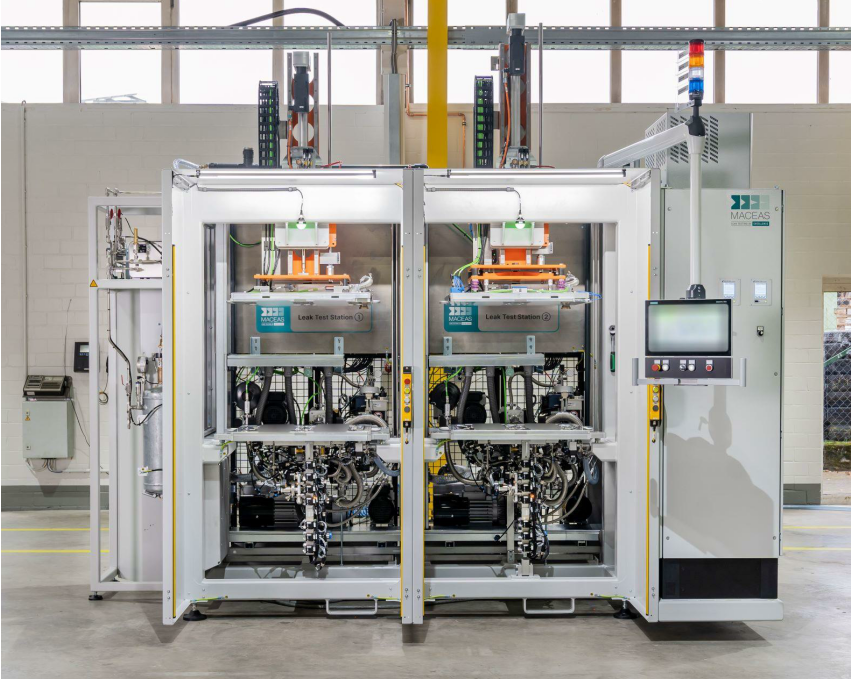德國MACEAS燃料電池氦氣測漏設備
MACEAS Helium Leak Test for Bipolar Plates
Link: Helium leak test | Worthmann-MA

燃料電池用雙極板
綠氫將成為能源與交通運輸轉型的關鍵元素,因為這種燃料在交通運輸、汽車領域以及能源儲存和部門聯結方面提供了多種可能性與機會。
雖然電池解決方案預計將成為大多數乘用車的主要動力系統,但燃料電池和氫能動力系統在未來也將扮演重要角色。特別是在重載、商用車輛、航運、航空領域以及地方公共交通方面,燃料電池驅動是一個真正的替代方案。短暫的充填時間和每次儲存週期內足夠的續航里程,是這項技術概念的主要優勢。
燃料電池負責產生所需的電能,其核心組件是雙極板。雙極板必須具備良好的密封性,以防止氣體因洩漏而繞過預期的反應流程。此外,系統中還包含緩衝電池、電動馬達、壓縮機、冷卻單元和管路系統等其他組件,其中大多數也必須進行洩漏檢測,以符合品質標準並確保耐用性與可靠性。
MACEAS提供創新且可靠的雙極板氦氣洩漏測試,雙極板內的不同流路將可於極短的時間內互相比對進行洩漏檢測。
雙極板的氦氣洩漏測試:
-
有效循環時間:12 秒
-
產能:每小時 300 件
-
測試氣體:10% 氦氣 / 90% 空氣
-
洩漏率:4.8 × 10⁻⁵ mbar*l/s(使用 10% 氦氣)
Bipolar plates for fuel cells
Green hydrogen will be a key element of the energy and mobility transition, as the molecule offers a multitude of possibilities and opportunities both in the transport and automotive sector as well as in energy storage and sector coupling.
Battery solutions are expected to be the leading power-train for the majority of passenger cars, but fuel cells and the use of hydrogen in powertrains will also play a major role in the future. The fuel cell drive is a real alternative, especially in heavy load, commercial vehicles, shipping, the aviation sector and local public transport. Short loading times and sufficient ranges per storage cycle are the main advantages of this concept.
The fuel cell generates the required electrical power. Their essential components are the bipolar plates. They must be tight so that no gas can bypass the desired process through leaks. There are also other components such as buffer batteries, electric motors, compressors, cooling units and piping systems, most of which also have to be checked for leaks in order to meet quality standards and to ensure durability and reliability.
MACEAS offers an innovative and reliable helium leak test for bipolar plates. The different circuits of the bipolar plates are leak tested against each other within the test cycle in very short cycle times.
Helium leak test of bipolar plates:
- Effective cycle time: 12 s
- Capacity: 300 parts / h
- Test gas: 10% helium / 90% air
- Leak rate: 4,8 x 10-5 mbar*l/s (with 10% helium)
